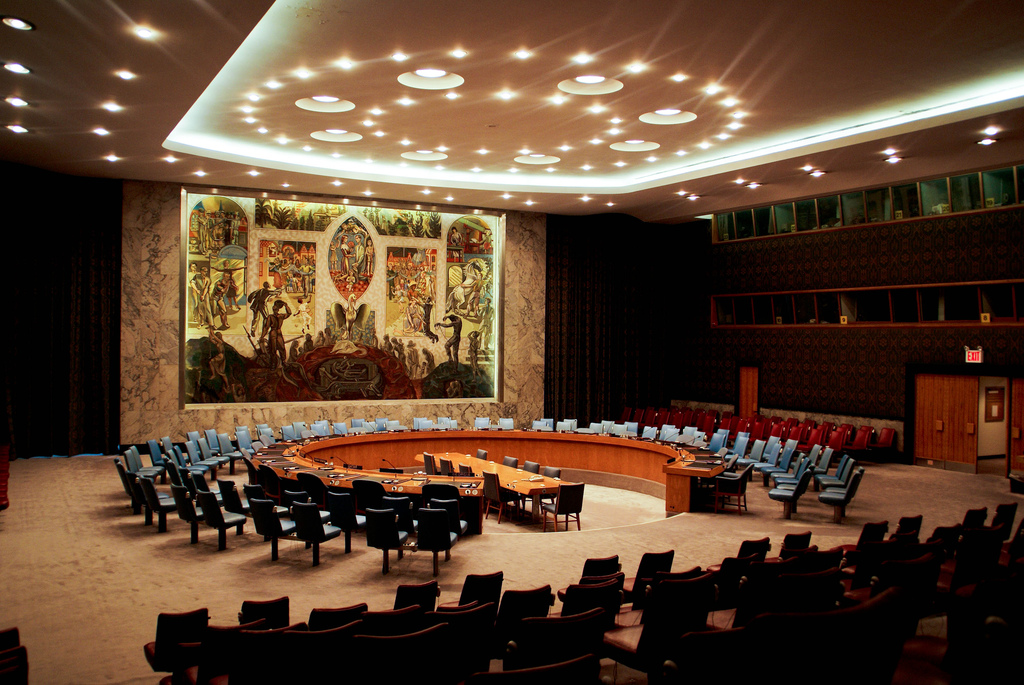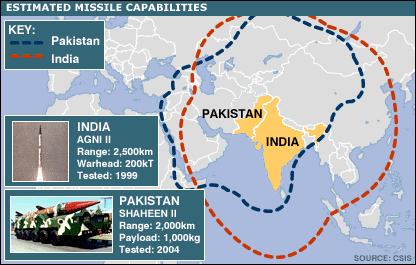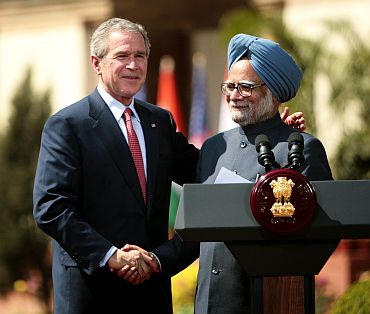By Syed Qamar Afzal Rizvi.
Thanks to the US-India nuclear deal, there have been new developments regarding the expansion of Indian nuclear power programme, offering serious deliberations. Apparently the course of these developments comes within the frame of civil nuclear energy, yet there is growing concern in the international community that on the pretext of making expansion of its civil nuclear energy Programme, India may manufacture more fissile material that can be used in the armament of other nuclear weapons.
Since the US-India nuclear deal signed in 2006, there have been serious concerns in the international community about the harrowing repercussions of this controversial deal- subsequently endorsed by US president Obama’s last year visit to India. At this critical juncture, where the call of nuclear disarmament is getting pace day by day, the US backing to India exposes the Western double standard on the nuclear policy. The ongoing expansion in Indian civil nuclear program without fulfilling the IAEA’s safeguards poses a big question mark on the transparency mechansim of this expansion.
The Harvard Belfer Centre for Science and International Affairs debates this issue in its recently published paper : The Three Overlapping Streams of Indian Nuclear Power Programs
Apart from the pivotal points raised by the Harvard Belfer Centre regarding the IAEA’s safeguards, the issue of this expansion of Indian civil nuclear program– via US-India nuclear deal—remains exclusively questionable with regard to the establishment of international norms accompanied by the raising concerns of the international community.

Ability to produce more nuclear weapons
Nuclear cooperation: Under the proposed deal, India would separate its military and civilian nuclear reactors, and place many—but not all—of its civilian nuclear reactors under International Atomic Energy Agency (IAEA) safeguards. Military facilities, and stockpiles of nuclear fuel that India has produced up to now, will not be subject to inspections or safeguards. Meanwhile, the US will be allowed to build nuclear reactors in India, and provide India with nuclear fuel for its civilian reactors.

The missile proliferation
The space cooperation aspect of the deal could result in transfers of technology and expertise relevant to nuclear missile development. For example, India will use its rocket Chandrayaan-1, which has previously been used to launch satellites into orbit, for its unmanned mission to the moon. Experts have long warned that the same rocket could also be armed with a nuclear warhead and turned into an intercontinental ballistic missile (ICBM). The methods for integrating payloads into space vehicles, which US engineers will assist Indian engineers in doing for the joint lunar mission, are also relevant to integrating multiple nuclear warheads into ICBMs. US assistance on Indian civilian space exploration ventures could help India develop the know-how for further developing its ballistic missile capabilities.
Transgression of NPT
The deal violates Article I of the nuclear Non-Proliferation Treaty (NPT), which states that “Each nuclear-weapon State Party to the Treaty undertakes not to transfer to any recipient whatsoever nuclear weapons or other nuclear explosive devices or control over such weapons or explosive devices directly, or indirectly; and not in any way to assist, encourage, or induce any non-nuclear-weapon State to manufacture or otherwise acquire nuclear weapons or other nuclear explosive devices, or control over such weapons or explosive devices.”
The deal also violates other positions agreed upon by consensus by NPT members, including a 1995 agreement on principles and objectives for nuclear non-proliferation and disarmament, which states, “New supply arrangements for the transfer of source or special fissionable material or equipment or material especially designed or prepared for the processing, use or production of special fissionable material to non-nuclear-weapon States should require, as a necessary precondition, acceptance of the Agency’s full-scope safeguards and internationally legally binding commitments not to acquire nuclear weapons or other nuclear explosive devices.”
UNSC resolutions
It also contravenes United Nations Security Council Resolution 1172 of 1998, which encourages all States to prevent the export of equipment, materials or technology that could in any way assist programmes in India or Pakistan for nuclear weapons or for ballistic missiles capable of delivering such weapons, and welcomes national policies adopted and declared in this respect.”
Nuclear race in South Asia
In response to the proposed US-India deal, Pakistan’s National Command Authority stated that its “credible minimum deterrence requirements” will continue to be met, indicating the possibility of an expansion of fissile materials stockpiles in Pakistan. Both India and Pakistan’s stocks, however, already far exceed the fissile material requirements for a “minimal” nuclear arsenal. China’s response will likely be similar if the deal goes through.
The space cooperation element of the deal provides India with the opportunity to increase its missile technology expertise. This in turn could lead to an increase in quantity and quality of its delivery systems, to which its neighbours would surely respond.
US involvement in East and South Asia features policies of selectively favouring or opposing nuclear activities that strongly affects the regions’ strategic balances. For example, the geostrategic benefits of using India to assert its interests in Asia is likely one of the primary rationales behind this deal for the US. Former RAND Corporation analyst Ashley Tellis says, “accommodating India on the issue of nuclear cooperation” would “buttress its potential utility as a hedge against a rising China” and “encourage it to pursue economic and strategic policies aligned with US interests,” helping to “shape the Asian environment in a way that suits our interests.” This estimate reflects that political expediency dominates over the legitimacy of international law/norms.
India’s honeymoon with Nuclear Supplier Group
Following the Nuclear Suppliers Group agreement which was achieved in September 2008, the scope for supply of both reactors and fuel from suppliers in other countries opened up. Civil nuclear cooperation agreements have been signed with the USA, Russia, France, UK, South Korea, Czech Republic and Canada, as well as Australia, Argentina, Kazakhstan, Mongolia and Namibia. A further nuclear cooperation agreement was signed with the UK in November 2015, with “a comprehensive package” of collaboration on energy and climate change matters involving £3.2 billion ($4.9 billion) in programmes and initiatives related to energy security and energy access. However, there is no civil nuclear cooperation agreement with Japan, which may be a limiting factor for some technology provision involving GE Hitachi and Westinghouse. Negotiations with Japan continue, and a preliminary agreement was signed in December 2015, with a lot of detail still to be negotiated. A joint statement said that the final document sealing the agreement would take some time.
On the basis of the 2010 cooperation agreement with Canada, in April 2013 a bilateral safeguards agreement was signed between the Department of Atomic Energy (DAE) and the Canadian Nuclear Safety Commission (CNSC), allowing trade in nuclear materials and technology for facilities which are under IAEA safeguards. A similar bilateral safeguards agreement with Australia was signed in 2014 and finalised in November 2015. Both apply essentially to uranium supply.
The initial two Russian PWR types at the Kudankulam site were apart from India’s three-stage plan for nuclear power and were simply to increase generating capacity more rapidly. Now there are plans for eight 1000 MWe units at that site, and in January 2007 a memorandum of understanding was signed for Russia to build the next four there, as well as others elsewhere in India.
A further such agreement was signed in December 2010, and Rosatom announced that it expected to build no less than 18 reactors in India. Then in December 2014 another high-level nuclear cooperation agreement was signed with a view to Russia building 20 more reactors plus cooperation in building Russian-designed nuclear power plants in third countries, in uranium mining, production of nuclear fuel, and waste management.
India was also to confirm a second location for a Russian plant – Haripur in West Bengal being in some doubt. Most of the new units are expected to be the larger 1200 MWe AES-2006 designs. Russia was earlier reported to have offered a 30% discount on the $2 billion price tag for each of the phase 2 Kudankulam reactors. This was based on plans to start serial production of reactors for the Indian nuclear industry, with much of the equipment and components proposed to be manufactured in India, thereby bringing down costs. However, at the end of 2015 the approved cost of Kudankulam units 3&4 was Rs 39,747 crore ($5.96 billion), according to the Minister for Atomic Energy, more than twice the costs of units 1&2, due to liability issues.
India needs to distinguish its civil and military nuclear programmes
There is little distinction between military and civilian nuclear affairs, and all matters of atomic energy come directly under the Prime Minister, not parliament. This means the nuclear establishment is under no obligation to disclose information on the nuclear power sector to citizens. There’s no excuse for this opacity in a country with an ambition to use nuclear energy for electricity. Regardless of these flaws, India is one of the few countries in the world that is expanding its nuclear power sector at an enormous rate. Seven more nuclear reactors are under construction, of 4800 MW installed capacity. At least thirty-six new nuclear reactors are planned or proposed.
The Western dichotomy
I have argued in my piece, published in the World Review ( Expansion of India’s civil nuclear programme is bad omen for peace)
“It also highlights Western double standards: it is no secret that the West has put pressure on Iran to follow the IAEA protocol regarding the UN nuclear watchdog’s inspection procedure. However, India has entered into no legal bindings regarding its nuclear activities and has not even signed the Fissile Material Cut-Off Treaty (FMCT), and is free to expand its nuclear programme. For the world’s 137 developing nations, India’s unjustified nuclear muscling provides no comfort for they think their quest for a civilian nuclear energy programme is being exploited by P5 – the official legal nuclear club and a powerful global lobby.… This Western attitude strongly suggests that it adopts a legal and moral segregation on the nuclear technology issue”.






.jpeg)
